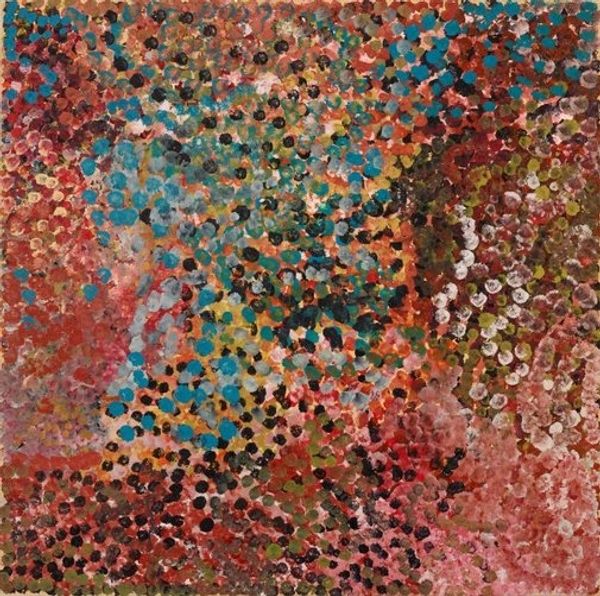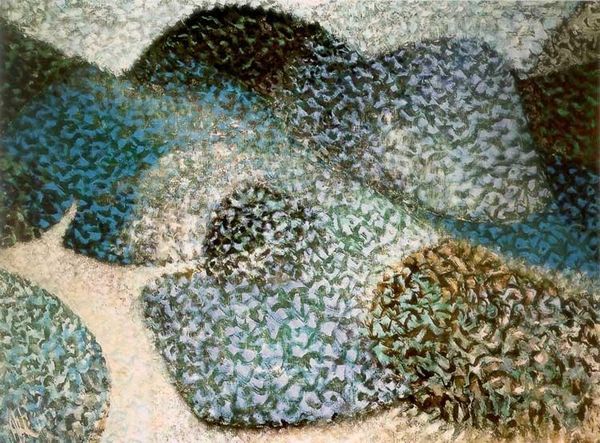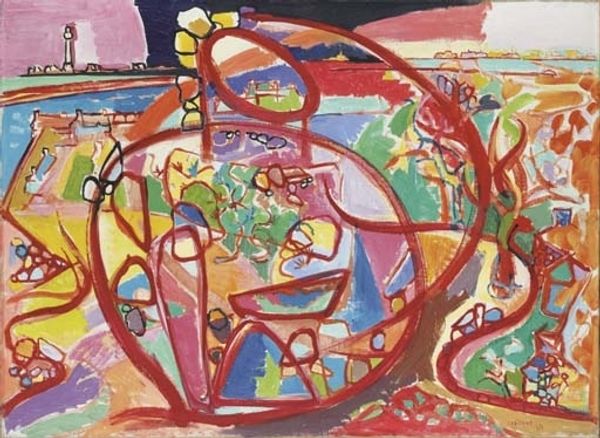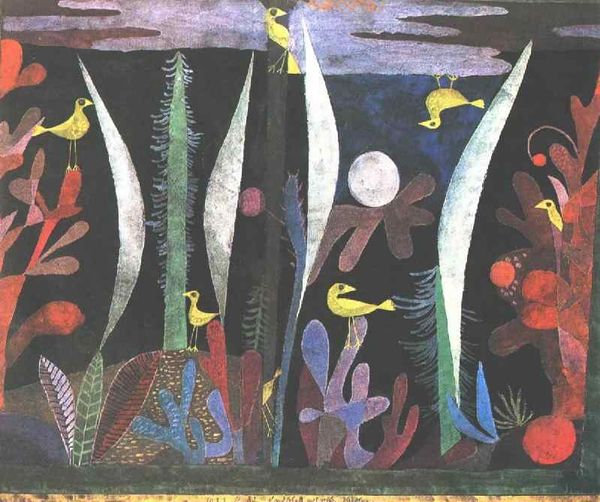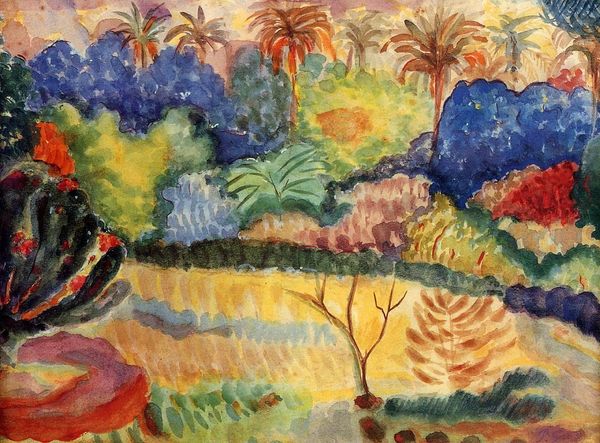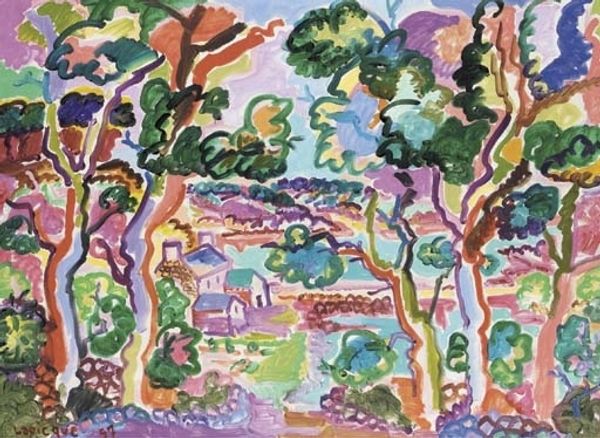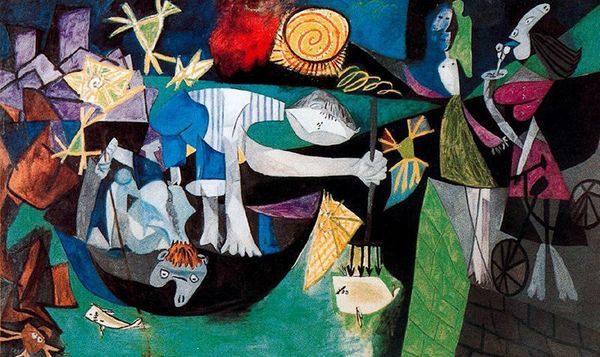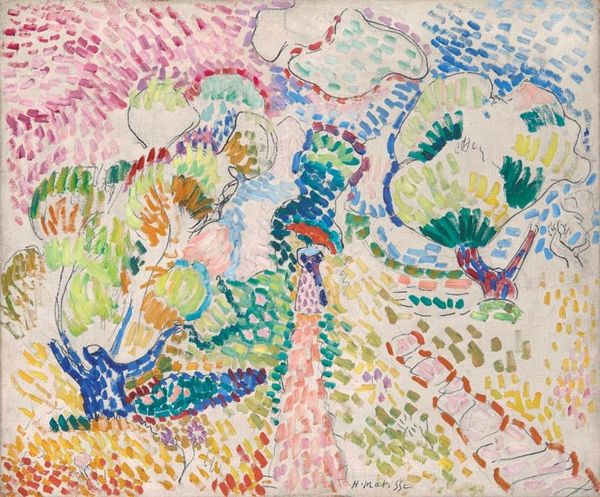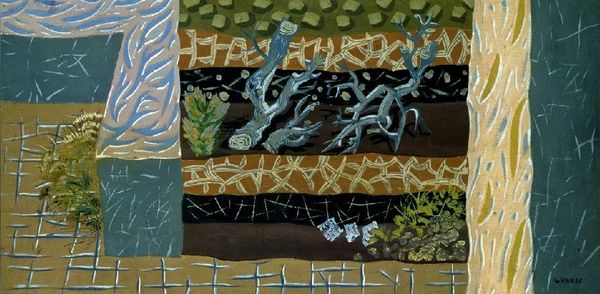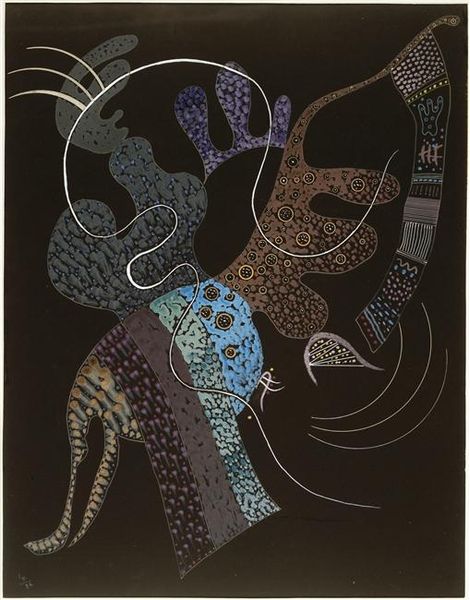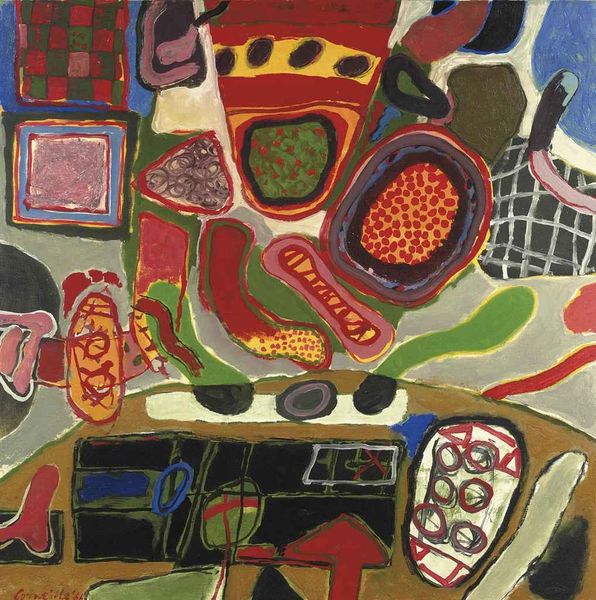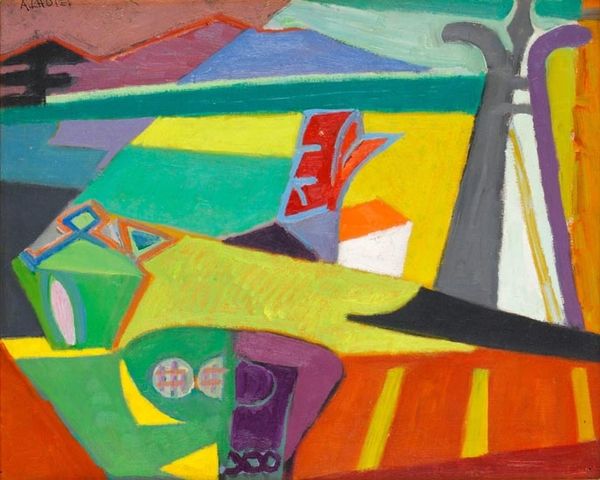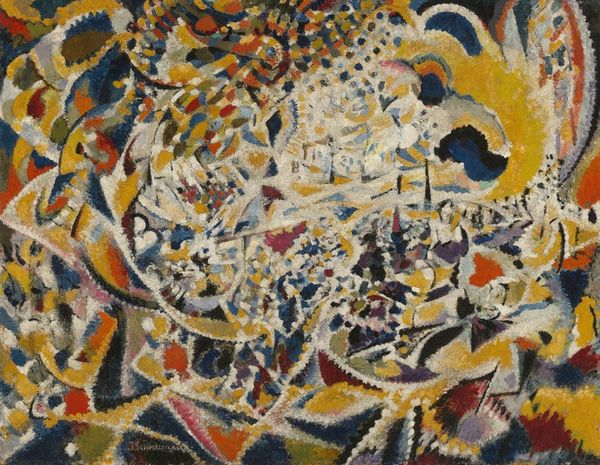
Copyright: Nikos Hadjikyriakos-Ghikas,Fair Use
Curator: Nikos Hadjikyriakos-Ghikas’s "Wild Garden," completed in 1959, is a mixed-media painting. It’s a fascinating intersection of landscape and abstraction. Editor: It feels like peering into a kaleidoscope. The forms are organic, vaguely botanical, yet fractured and rearranged with this unusual palette… Curator: The interwar period saw a rise in nationalist sentiment, a development which caused Ghikas to reflect on his identity. While he had already made a name for himself within Parisian avant-garde circles, his connection to Greece prompted him to look towards its traditions and its landscapes to create something truly new, a distinct national art, though that’s, of course, a contentious idea. Editor: National identity through art can be a dangerous game. Yet I see how Ghikas grapples with this through fractured representation and how that mirrors the political realities and the splintering of Europe at that time. Curator: Ghikas aimed to create something unique through abstracting classical forms. You can also see the heavy influence from his engagement with architectural projects at this time and also through the incorporation of textiles. It speaks to broader cross-cultural dialogues too, moving away from pure abstraction into a space that still holds recognizable symbols. Editor: How the landscape is constructed is compelling. Look at how the patterns break down; one fragment bleeds into the next; textile-like details juxtaposed with abstract geometries. It destabilizes a traditional, naturalistic reading. And I like how these fragmented parts gesture towards a wildness held within this painting. There's an invitation for different readings, even feminist interpretations of ‘nature’ disrupted by male rationalizations and ordering, a dialectic also held within the title itself. Curator: That's interesting. His return to Greece amidst the socio-political landscape of the mid-20th century surely complicated a simplistic relationship to his national identity. How he negotiated all of that in his creative expression provides us with much to reflect on, particularly his legacy within debates around nationalism and its relationship to art. Editor: Yes, indeed. There is a fascinating story within the brushstrokes of this piece, one that transcends pure aesthetics.
Comments
No comments
Be the first to comment and join the conversation on the ultimate creative platform.
